This is something we see all the time in our painting conservation laboratory; someone accidentally pokes the 19th century painting on canvas with very little effort and causes a hole or rip. Sometimes its amazing how fragile these paintings are.
Oil paintings on canvas from the 1800’s are very brittle… more brittle that any other period of art. This is because the additives into the fabric in order for them to be produced by industrial looms accelerates the deterioration by acids. I have in the lab canvas that is 200 years older that is 10 times stronger because it was made without the additives for mass production.
In the case of this “White House Quality” historical portrait of George Washington that was painted about 1800, the hanging wire which was a bit frayed, poked the art handler as it was being hung, the person reacted and accidentally hit against the portrait putting his elbow through the painting.
What might seem to have been a disaster, the owner chose to see the repair of the rip as a good excuse to have the painting cleaned of its yellowed varnish, have an historically appropriate frame made and to get a high tech light that would really show off his gorgeous artwork. As it was to be hung in a focal area of the home, it turned out to give a beautiful glow of quality to everything else in the room that he entertains in. Here is his testimonial:
We are often asked if we can cut costs by patching the rip. This option most always creates negative condition problems, sometime immediately and sometimes “down the road.” The patch sets up an uneven reaction of the canvas from humidity and heat setting into motion new cracking patterns and causing very often disfiguring bulges. In addition, the later removal of the patch can be problematic depending on how “permanent” the repairer meant it to be (it may be very hard to remove). In other words, you will be creating preservation problems almost immediately.
Many smaller rips can be repaired very nicely without a general lining and can even be made to be minimally visible from the back.
If you buy a painting with a patch and you want to properly preserve and restore the artwork, then you will have to pay for the removal of the previous repair person’s sins in addition to redoing it correctly.
Here is a link to a video on how a proper rip repair is performed: https://www.youtube.com/watch?v=Xhhu0AZ_WVI
Note that this video offered 4 excellent tips for collectors to help determine the quality of the rip repair of an oil painting:
- Realignment of ripped fibers must be exact – best done under a microscope
- The fill or replacement of lost paint must be perfect and textured to match original surrounding paint
- The inpainting colors (color matching of missing paint) must be exact in color and transparency
- The gloss of the final result must be exactly like the surrounding areas.
Questions about your painting restoration interests? Call Scott M. Haskins, Oriana Montemurro, Virginia Panizzon Art Conservators at 805 564 3438 faclartdoc@gmail.com

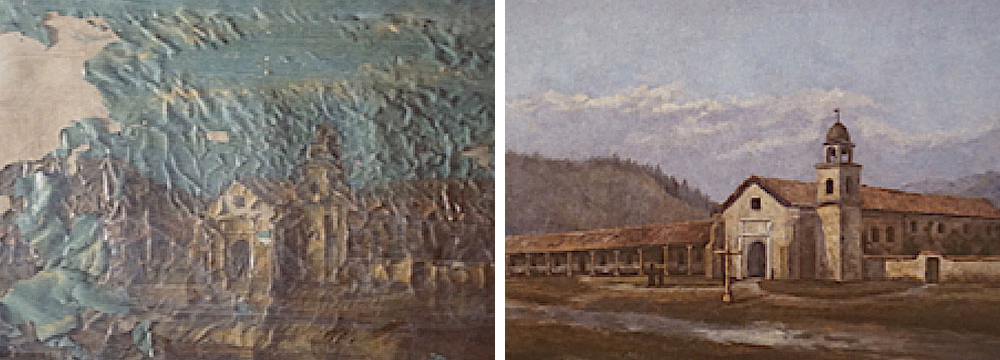
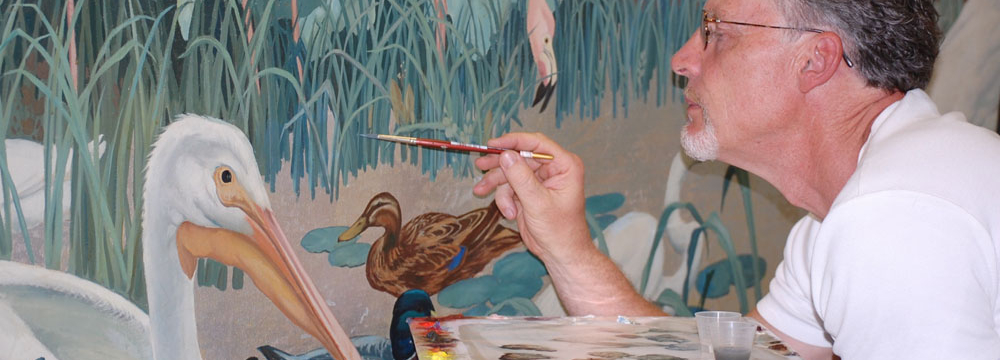
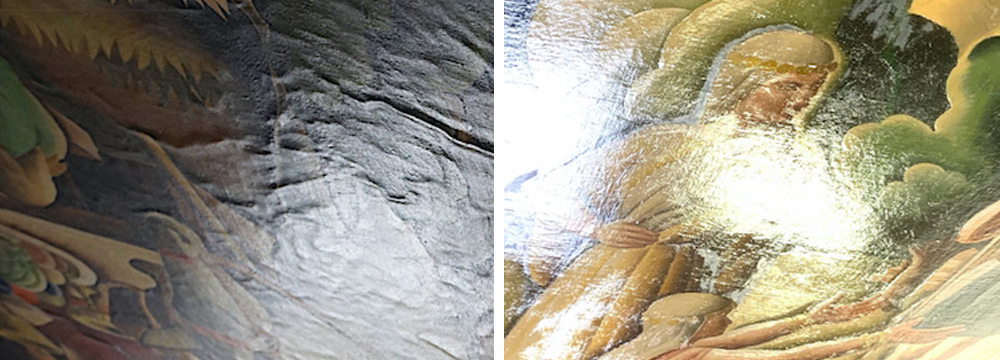

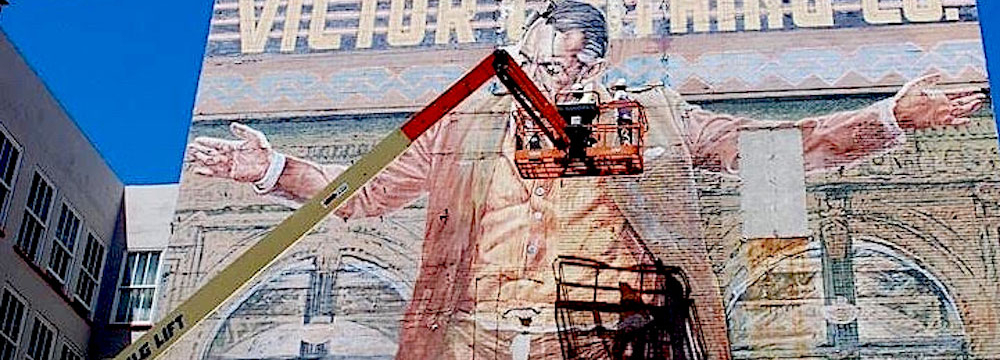
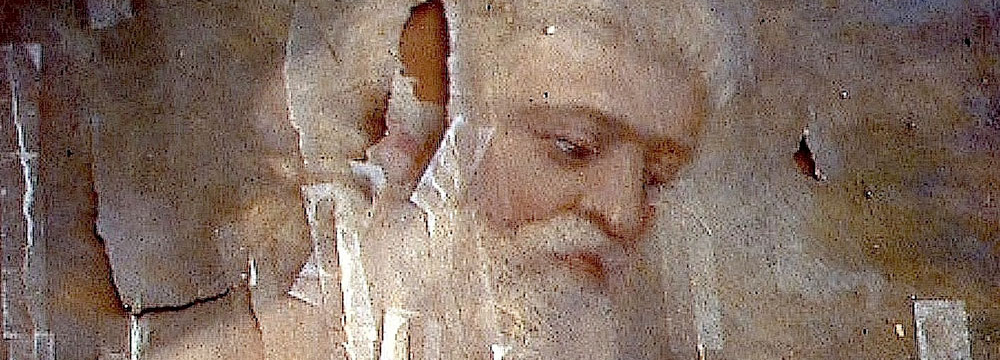
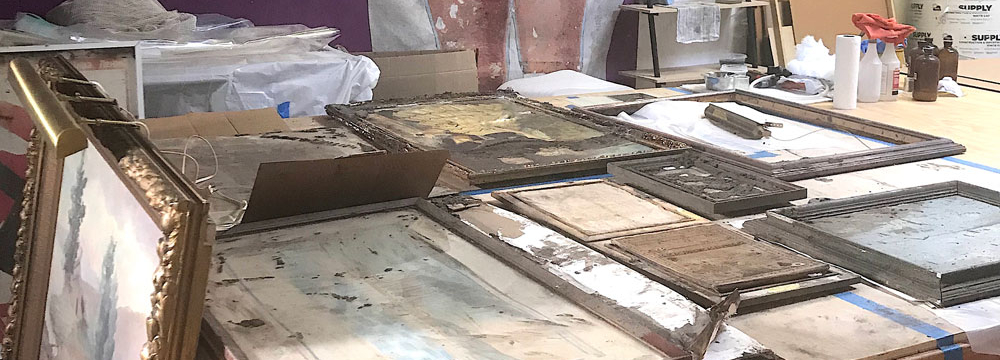

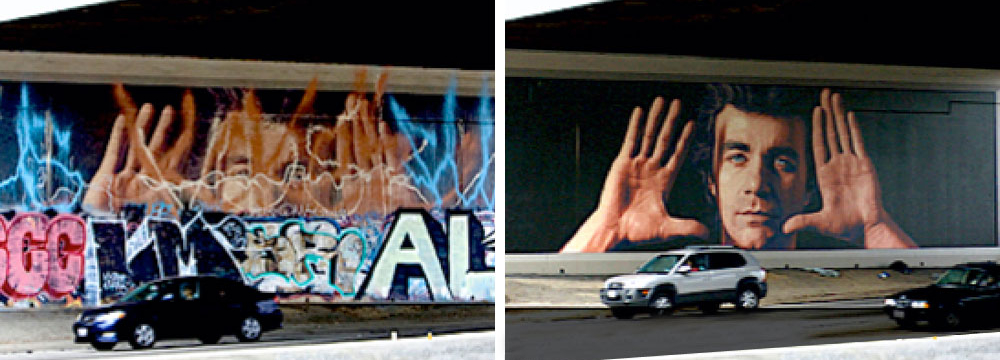
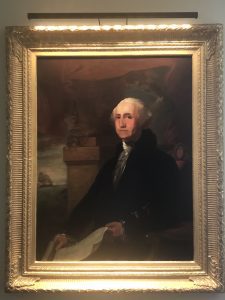
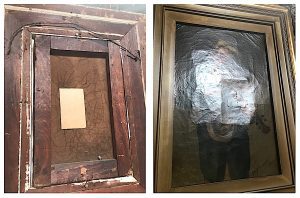

This painting of George Washington is just beautiful. I love this period of painting and I’m impressed with the quality of work the painter did. Great job on its restoration.
The Real Person!
Author Scott M. Haskins acts as a real person and passed all tests against spambots. Anti-Spam by CleanTalk.
Thanks Kabirat for the nice comment.
I have a couple of 19th century paintings that I guess are brittle too. Once has a rip. Your story and video was very informative. I’ll call and see what can be done to salvage them.
The Real Person!
Author Scott M. Haskins acts as a real person and passed all tests against spambots. Anti-Spam by CleanTalk.
When you are ready Larry, give us a call to discuss at 805 564 3438